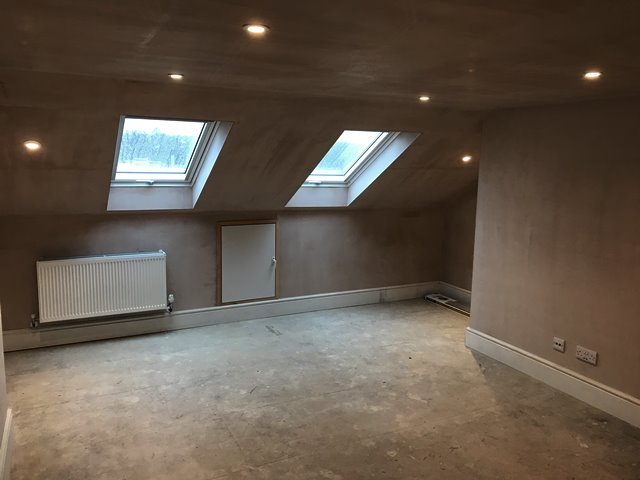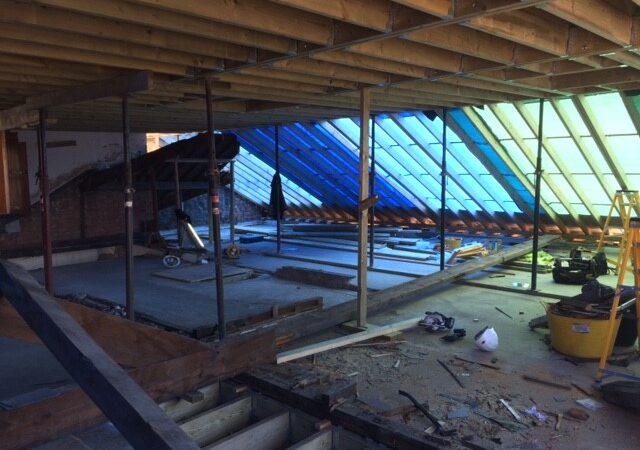Loft conversions are a popular way to increase living space without the need for moving house. They offer the potential for a new bedroom, office, or even a cozy retreat. However, one of the key considerations when converting your loft is how to heat it efficiently. With varying insulation levels, ceiling heights, and usage scenarios, the right heating solution can make a significant difference in comfort and energy efficiency. In this post, we’ll explore the various heating options for loft conversions and discuss what works best for different situations. If you are seeking a source of inspiration and guidance about loft conversions, visit https://loftconversion.london/ for further info.
1. Understanding Your Loft Conversion
Before diving into heating options, it’s important to assess your loft conversion’s unique characteristics:
- Insulation: Proper insulation is crucial. A well-insulated loft will retain heat better, making any heating system more effective.
- Space and Layout: The size and layout of your loft affect heating needs. Open spaces might require more powerful solutions compared to smaller, enclosed areas.
- Usage: Consider how you plan to use the space. A bedroom might need different heating compared to an office or a playroom.
2. Central Heating System
Pros:
- Consistency: Central heating provides consistent and even heat distribution throughout the home, including the loft.
- Integration: If you already have a central heating system, extending it to your loft can be a seamless option.
Cons:
- Cost: Extending a central heating system to a loft can be expensive, especially if new radiators or pipes are required.
- Space: Adding radiators or ductwork might take up valuable space in your loft.
Best For: Central heating is ideal if you’re already using it in your home and prefer a uniform heating solution throughout. It works well for larger loft conversions where consistent temperature is important.
3. Underfloor Heating
Pros:
- Efficiency: Underfloor heating provides a more even heat distribution and can be more energy-efficient than traditional radiators.
- Space-Saving: It frees up wall space and avoids the need for visible radiators, making it a great option for modern and minimalist designs.
Cons:
- Installation: Installing underfloor heating can be complex and costly, particularly if retrofitting it into an existing space.
- Response Time: It can take longer to heat up a room compared to traditional heating methods.
Best For: Underfloor heating is well-suited for loft conversions where floor space is at a premium, and a modern, unobtrusive heating solution is desired. It’s also effective in well-insulated spaces.
4. Electric Radiators
Pros:
- Simplicity: Electric radiators are easy to install and can be controlled independently, which is ideal for occasional use spaces.
- Cost-Effective: They have a lower initial cost compared to other systems and don’t require plumbing.
Cons:
- Running Costs: Electricity can be more expensive than gas, leading to higher running costs.
- Heat Distribution: They might not heat larger spaces as effectively as central heating or underfloor systems.
Best For: Electric radiators are great for smaller loft conversions or spaces that are used intermittently. They offer flexibility and are relatively easy to install.

5. Heat Pumps
Pros:
- Energy Efficiency: Heat pumps are highly efficient and can provide both heating and cooling. They are particularly effective in well-insulated spaces.
- Sustainability: They are environmentally friendly and can lower your energy bills in the long run.
Cons:
- Initial Cost: Heat pumps have a high initial installation cost.
- Space Requirements: They require space for the external unit and may need additional work to integrate into existing systems.
Best For: Heat pumps are ideal for energy-conscious homeowners with well-insulated lofts. They work best in larger loft conversions where the higher initial cost can be offset by long-term savings.
6. Portable Heaters
Pros:
- Flexibility: Portable heaters can be moved around and used only when needed, making them versatile and cost-effective for occasional use.
- No Installation: They require no installation, so they can be used immediately.
Cons:
- Limited Heating Capacity: Portable heaters may not be sufficient for larger loft spaces or those with poor insulation.
- Safety Concerns: They can pose a fire risk if not used properly or left unattended.
Best For: Portable heaters are best for small, rarely used loft spaces where immediate and flexible heating is needed without a significant investment.
Conclusion
Choosing the right heating solution for your loft conversion depends on various factors, including insulation, space, and intended use. Central heating and underfloor systems provide comprehensive solutions for larger, frequently used spaces, while electric radiators and portable heaters offer more flexibility and lower upfront costs for smaller or less frequently used lofts. Heat pumps present a sustainable and energy-efficient option for well-insulated areas with a higher initial investment.
Ultimately, the best choice will depend on your specific needs, budget, and how you plan to use your loft space. By considering these factors, you can ensure that your loft conversion remains comfortable year-round and meets your heating requirements efficiently.

